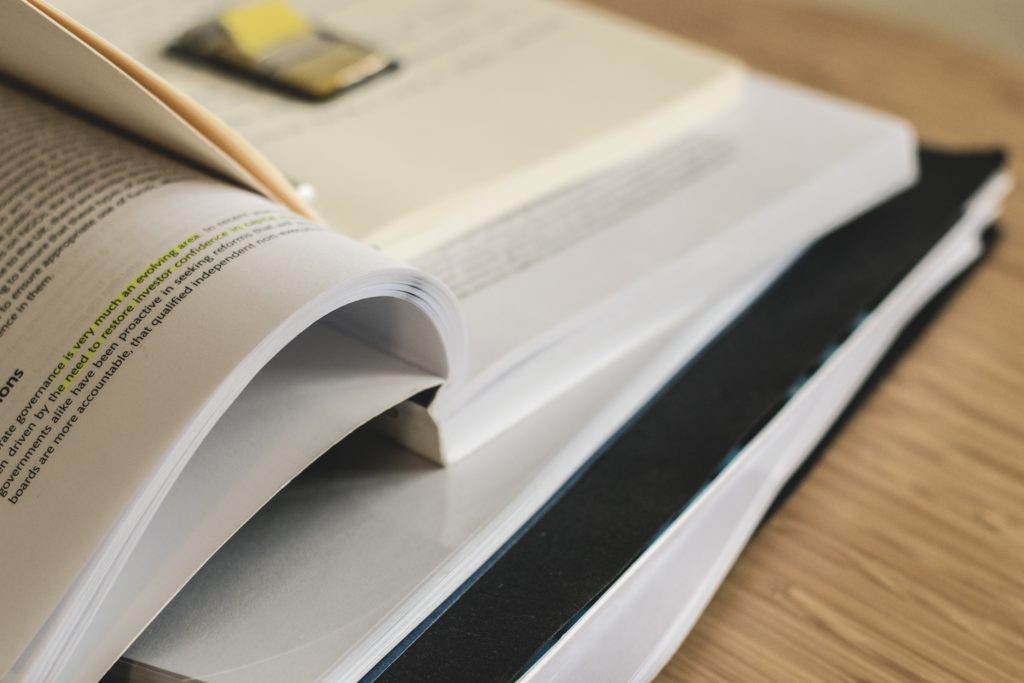Editorial note: This article was originally written by Dr. Winnie Salamon and published on 16 May 2019. It has been updated with new content and insights to reflect the latest developments in the topic, particularly concerning AI and plagiarism. The updates were made without direct input from the original author.
I was helping a student edit her upcoming assignment when she mentioned that her lecturer was obsessed with plagiarism.
“He talks about it all the time, in every single lecture,” she said. “It’s really boring.”
So maybe every lecture is a little excessive, but for anyone who teaches at an Australian educational institution, plagiarism is a huge and ongoing issue with no simple solution.
What exactly is plagiarism?
Plagiarism is when you take somebody else’s ideas or words and pass them off as your own. The Merriam-Webster online dictionary defines plagiarism as ‘literary theft’. Australian educational institutions consider plagiarism to be a serious act of ‘academic misconduct’. In other words, plagiarism is cheating.
What does plagiarism look like?
These are some of the most common forms of plagiarism. I have used the popular Harvard (author-date) referencing style in these examples. Use the reference style recommended by your educational institution and stick to it. Never use more than one referencing style in a single assignment.
Whole essay plagiarism
Whole essay plagiarism is when a student hands in an essay they have not written themselves. This includes essays bought from any sources that sell ready-made essays, or papers taken from the internet, a book or a print article.
Paraphrasing plagiarism
Paraphrasing is when you write what someone else has said in your own words. There is nothing wrong with this, but you must include a reference to show that you are referring to someone else’s ideas.
For example:
Original source:
Commodities are things produced as articles of commerce. Not all objects are commodities, as the category of commodity lexically marks the difference between an object and an object as merchandise. A consumer society is one in which the commodity orients social activity (Lofton, 2011, p. 23).
Reference list:
Lofton, K 2011, Oprah: The Gospel of an Icon, University of California Press, Berkley and Los Angeles.
Plagiarised source:
We cannot say that all objects are commodities, as there is a difference between an object and an object as something to be sold. The definition of a consumer society is one where the commodity directs our social activity. Oprah, for example, is a commodity who influences the behaviours of her audience.
Why is the plagiarised source plagiarism and how can I avoid it?
The ‘plagiarised source’ is considered plagiarism because, even though it is written slightly differently, it draws directly from Lofton’s work without referring to her.
Correctly referenced version:
We cannot say that all objects are commodities, as there is a difference between an object and an object as something to be sold. The definition of a consumer society is one where the commodity directs our social activity (Lofton, 2011, p. 23). Oprah, for example, is a commodity who influences the behaviours of her audience.
Word-for Word plagiarism
Original source:
Oprah is a product, but Oprah’s product is not individual objects. Her patents are not mechanical innovations or engineering improvements. She does not design fabric or copyright personal recipes. Rather, her taste is her product (Lofton, 2011, p. 24).
Plagiarised source:
Not all commodities come in the form of a physical object. Oprah is a product, but Oprah’s product is not individual objects. Rather, her taste is her product.
Why is this plagiarism and how could I avoid it?
There are no quotation marks to indicate that this phrase is a direct quote.
Correctly referenced version:
Not all commodities come in the form of a physical object. ‘Oprah is a product, but Oprah’s product is not individual objects…Rather, her taste is her product.’ (Lofton, 2011, p. 24)
AI and plagiarism
The introduction of artificial intelligence (AI) into academic settings brings both new tools and new challenges in the fight against plagiarism. While AI can assist in generating content and sparking ideas, it also complicates the traditional methods of detecting plagiarism.
It’s important to understand that just because AI can produce original text, this doesn’t exempt such text from being scrutinised for plagiarism.
Is there a way to ethically use AI-generated content in assignments?
Using AI tools in your assignments can be acceptable, provided you use them ethically and ensure your course or institution permits their use. By following these guidelines, you can effectively use AI to enhance your learning while maintaining academic integrity:
- Always be upfront about using AI-generated content as required by your institution. Transparency is key in maintaining fairness and adhering to academic standards. It’s much like respecting the rules of any game; it ensures everyone plays on a level field.
- It’s important to thoroughly understand any content generated by AI. Be prepared to discuss it and integrate it meaningfully into your work, reflecting your unique perspective and analysis. This approach demonstrates your engagement with the material and ensures that your use of AI genuinely enhances your learning experience.
- Just like citing articles or books, you need to cite any AI frameworks or databases that assisted you. This is not only about being honest but also about showing your understanding of the tools and resources that inform your work.
Detecting AI-generated plagiarism
Educational institutions are cracking down on AI plagiarism through the use of sophisticated tools that can identify the subtle characteristics of AI-generated content.
As a student, you should be aware that these tools are now a standard part of the toolkit used to ensure academic integrity. Always check your institution’s policies on AI to ensure your compliance and avoid any misunderstandings.
What isn’t plagiarism?
Information that is considered ‘common knowledge’ to your audience is not plagiarism.
For example, facts like Abraham Lincoln was the sixteenth president of the United States or that the moon is around 384,400 kilometres away from Earth are considered common knowledge because most people are aware of this information.
If you’re writing for a specific audience that is very familiar with your topic, you don’t need to provide references for common knowledge.
It gets a bit trickier when you’re writing something for an audience that might not know about your topic, such as a biology paper for people who know nothing about biology. If this is the case, always credit common knowledge to the right source.
Why is plagiarism taken so seriously in Australia?
Working on an assignment is an opportunity for you to learn and grow. It is a chance to increase your understanding of a particular issue or topic, as much as it is about the grade you receive in the end. By plagiarising, you are not only cheating your lecturer or tutor, but you are also undermining your own learning. When you substitute someone else’s words as your own, you are missing out on the chance to improve your own writing skills.
What else can I do to avoid plagiarism?
As you can see from the examples above, most cases of plagiarism can be avoided by correctly referencing all your sources. By clearly signalling where you have used someone else’s words or ideas, you are letting your reader know that you are drawing on your external research to help formulate your own ideas.
There is nothing wrong with being inspired by the work of others. The best way to learn is to look at what others have done before us, being inspired by successes and learning from past mistakes.
Never stop thinking
Never stop thinking. You should understand your material well enough to explain its meaning in your own words. When you do quote a source directly or paraphrase what someone else has written, ensure you that you reference where the information came from every single time you refer to it.
Ask for help
Another reason students plagiarise is that they lack confidence in their own abilities. If you are struggling with your assignment, ask for help. Your tutor or academic services at your institution can help you edit and plan your work so that you can build confidence in your own abilities.
Remember, you are a student. Nobody expects you to write in the same way as a seasoned professional with 30 years of experience. Develop your own voice and be proud of it.
Be organised
When people are under pressure, they sometimes take short-cuts by cheating. It is hard, if not impossible, to produce strong, thoughtful and well-edited work at the last minute. Giving yourself time to take clear notes and to organise and understand your material will not only improve the quality of your work, but it will also help reduce your stress levels.
What happens if I do get caught plagiarising?
Different institutions have their own policies regarding plagiarism, but they all consider plagiarism to be cheating.
You will not pass your assignment – and possibly the entire subject – if it is confirmed that you have plagiarised. You may also be required to attend a meeting with your Head of School to discuss the matter and you will be issued with a warning that may or may not go on your permanent record.
In the worst-case scenario, you could be expelled from the institution, which might lead to further complications with your visa status. This is why it’s important to understand and follow your institution’s plagiarism rules—not just for academic integrity, but to maintain your student status as well.
And finally…
Your lecturer or tutor would much prefer to read an imperfect assignment by a student who has challenged themselves and worked hard to establish their own voice than a more fluent essay that is filled with someone else’s words.
It may be boring and obvious, but the more work you put in, the more you will get out of your studies in the long run. If you focus on the learning process rather than your final grades, you might be surprised by just how successful you become.





